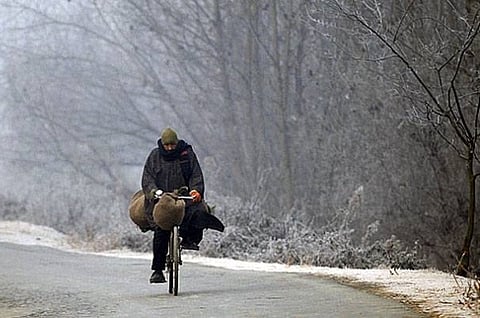
- News Updates
- PSU Watch
- Defence News
- Policy Watch
- हिन्दी न्यूज़
- Jobs Watch
- States News
- Event News

New York: With scientists and climate experts raising a hue and cry about global warming, people are often left bewildered when the temperature drops below freezing point in winters, often wondering, "If global warming is heating up the earth, why are winters so cold?" One of the infamous people to have thought this aloud was US President Donald Trump, who took to Twitter to say, "In the beautiful Midwest, windchill temperatures are reaching minus 60 degrees, the coldest ever recorded." Trump wrote, "In coming days, expected to get even colder. People can't last outside even for minutes. What the hell is going on with Global Warming? Please come back fast, we need you!"
The solution to the mystery lies in the difference between local weather and climate.
Climate refers to how the atmosphere acts over a long period of time, while weather describes what's happening on a much shorter time scale. The climate can be thought of, in a way, as the sum of long periods of weather.
While parts of the US were 15 to 30 degrees Fahrenheit colder than average in December 2017, the world as a whole was around 0.9 degrees Fahrenheit warmer than the average temperature from 1979 to 2000.
Depending on how quickly greenhouse-gas emissions rise, the world, on average, could warm roughly 2 to 7 degrees Fahrenheit by the end of the century, according to climate scientists.
A study in 2009 revealed that the US witnessed around as many record highs as record lows in the 1950s. However, by the turn of the century, there were twice as many record highs as record lows. Severe cold snaps were still happening, but they were becoming less common.
A dreaded weather system called the polar vortex has recently caused some cold spells. As a result of changes in the jet stream that are attributed to the warming atmosphere, the polar vortex has been appearing more frequently outside the Arctic. These changes allow frigid air to escape from the Arctic and travel southward.
